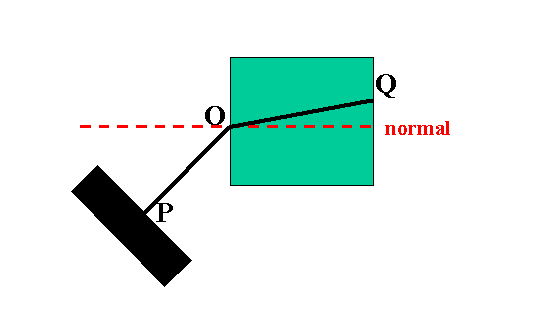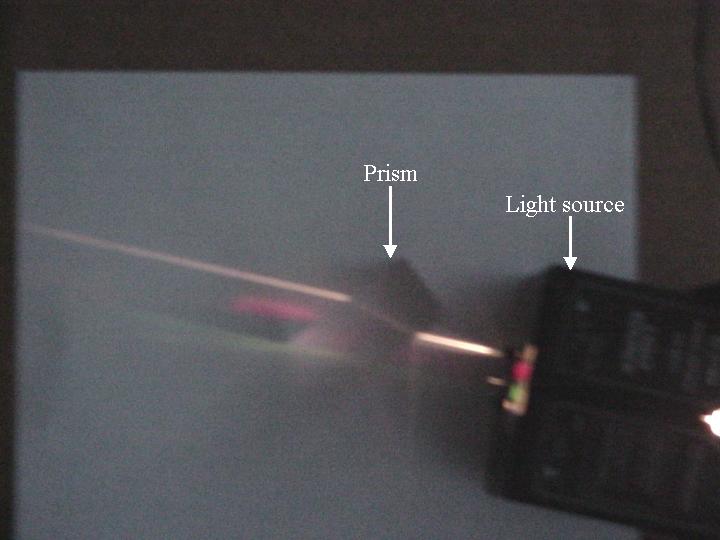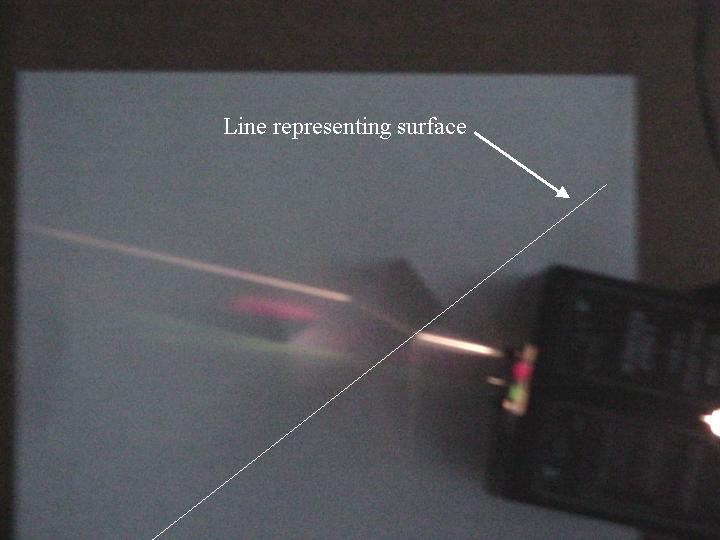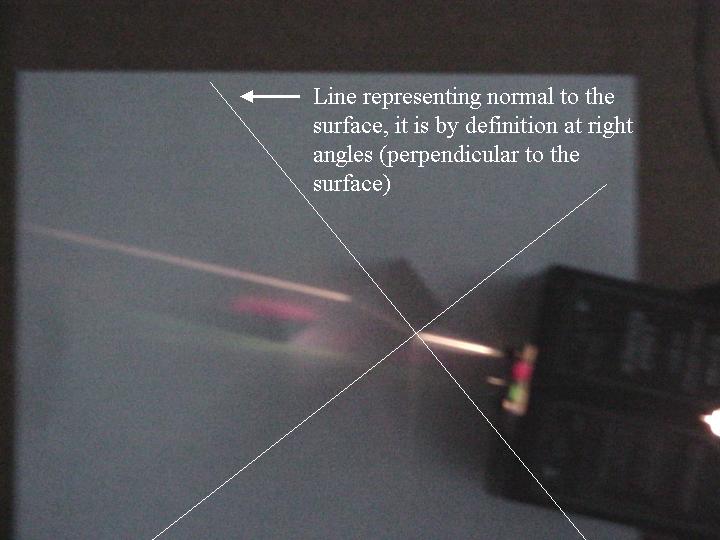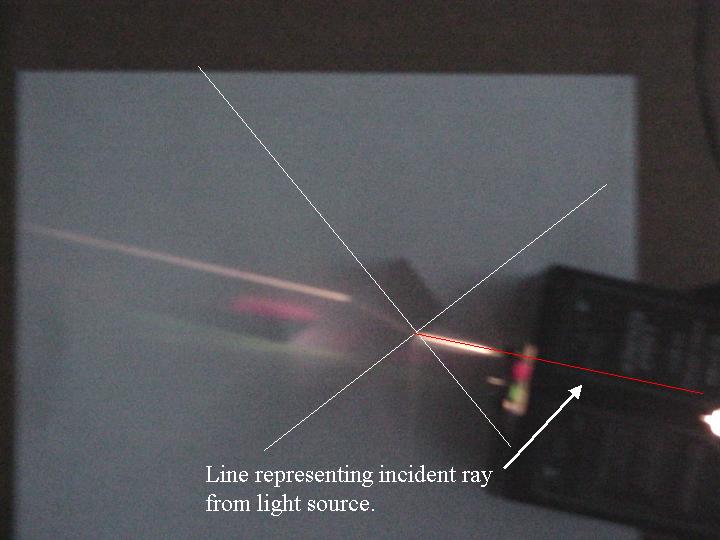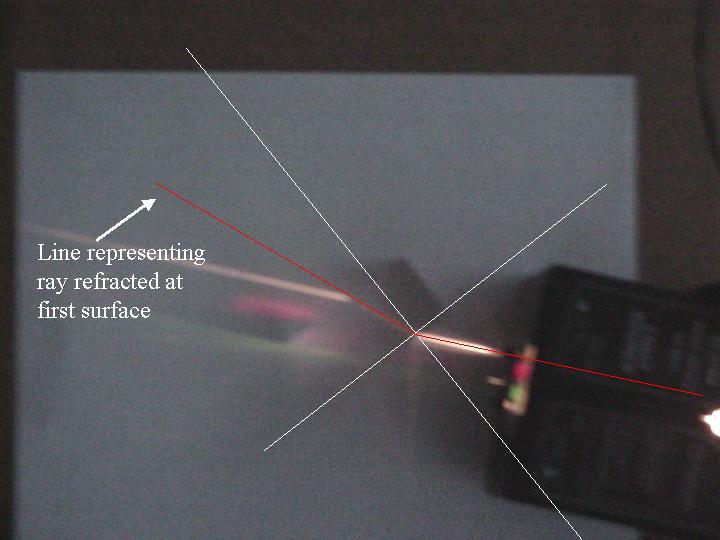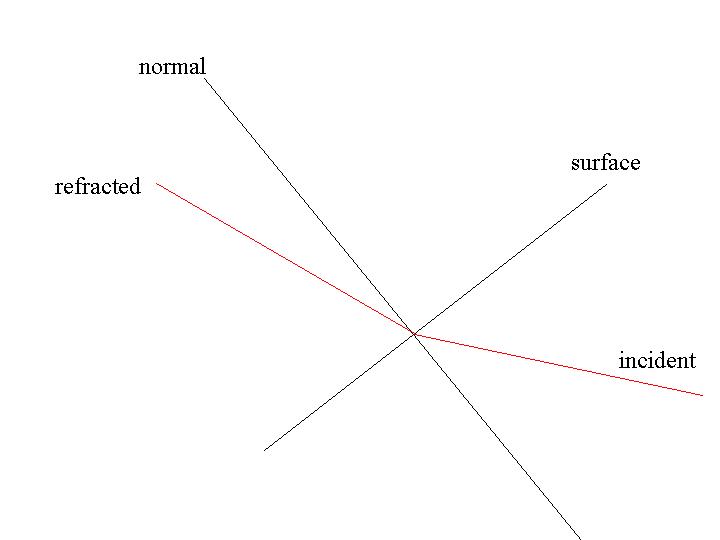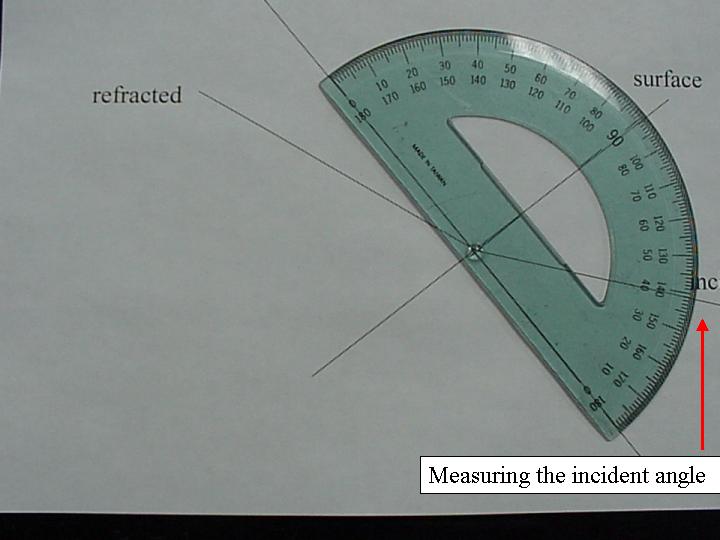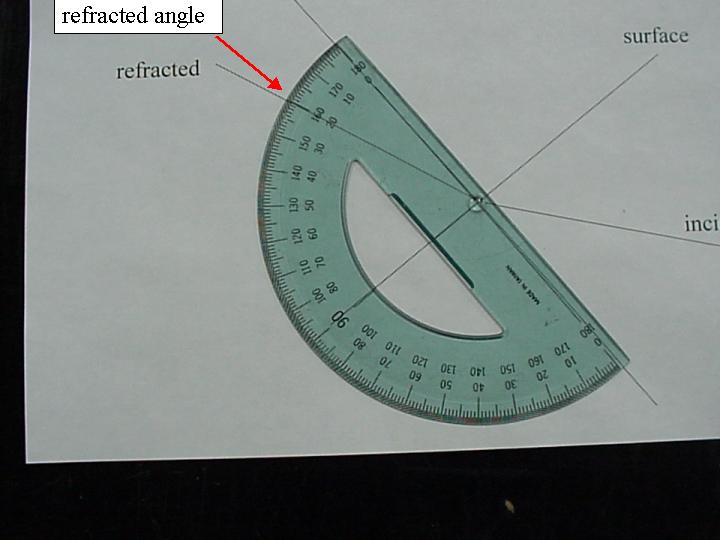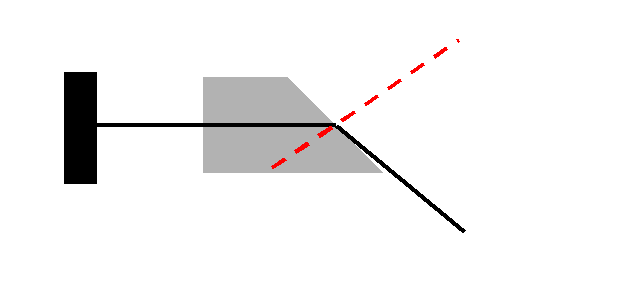Refraction and reflection of light
When a ray of light impinges on a surface where two different
materials meet, part of the ray is reflected and part of it is
transmitted. If the ray is perpendicular to the surface, then
the incident ray, the reflected ray and the transmitted (refracted)
ray all lie along the same line (i.e they are collinear). If the
ray is not perpendicular to the surface, then the ray appears to
be bent at the surface. The amount of bending depends on how close
the ray is to being perpendicular and on the properties of the two
surfaces.
To measure how close the ray is to being perpendicular, we
measure the angle between the incident ray and the normal (a line
perpendicular to the surface) that meets the surface at the same
point the ray does. This angle is called the angle of incidence.
Depending on the situation the refracted ray may bend toward or
away from the normal. To determine this bending, we measure the angle
between the refracted ray and the normal. This angle is known as the
angle of refraction.
The property of the materials that is important in determining the
amount of bending is the speed of light in the material. The speed of
light in a material v is related to the speed of light in a vacuum
(which is denoted c) through the material's index of refraction n.
v = c / n
Since the speed of light in the material cannot exceed the speed
of light in the vacuum, n must be greater than one. Actually what
is important in determining the amount of bending of rays is the
ratio of the speeds.
All of these results are combined into Snell's law.
ni sin θi =
nr sin θr
In our case, one of the media will be air, and the index of
refraction of air is very close to one.
Part I.
- Place a quadrilateral prism from the optics kit on a sheet
of paper on top of the corkboard.
- Have a light source shine on it.
- Note the point where the light enters the prism (let's call it
O) and some point along the light's path to the prism (let's call
it P1). Mark it with a pen or pencil, you will be turning in these sheets
along with your lab writeup.
- Also note the point on the opposite side where the light leaves
the prism (let's call it Q1); it must be marked at the surface. (Note that
in Part I the surface
we are interested in is the first surface, where the medium
changes from air to plastic.)
- One must construct a normal at the point O. If the subsequent beams (other
incident angles) one collects have the same O then one has fewer normals to
construct; however, it is not necessary for the beams to have the same origin. Make four sets of
measurements altogether
(P1 –
P4 and Q1 –
Q4). You should have as wide a range of angles as
possible, though you should avoid very small angles since they
are difficult to measure.
- Draw a line representing the prism's surface where the light
entered and a normal to that line through the point of entry O.
(Do not draw a line you "think" is perpendicular but use some method
to make sure the line is as close to perpendicular as you can
make it; you will lose points for a bad normal line.)
- Draw lines from your P's to O (or O's) and from your Q's to O (or O's) and measure
the incident angles θi
(between OPn and the normal) as well as the refractive
angles θr (between
OQn and the normal).
- You must submit this sheet as part of the lab report. If the angle
between the normal and the surface is not within 3 degrees of a right triangle
you may lose points. If any measured angle is off by more 3 degrees
you may lose points.
- According to Snell's law for this case, sin
θi = n
sin θr,
where n is the index of refraction. Plot sin
θr vs. sin
θi
and extract n.
(If you use Excel to calculate the sine of the angles remember that Excel uses
radians and that there is a function for converting degrees to radians.)
|
Angle of incidence |
Angle of refraction |
| | |
| | |
| | |
| | |
Part II.
Repeat the measurements above for the square shaped objects
made of different material. You might want to stack two of them
together so you are not confused by the light which simply
passes over the block.
|
Angle of incidence |
Angle of refraction |
| | |
| | |
| | |
| | |
Part III.
- Note that in this part we will focus our attention on the second surface. Place the quadrilateral prism used in Part I with the slanted
end away from the light source (i.e. the two right angles should
be closest to the light source).
- The light may or may not pass through the opposite face.
Starting from an angle where light passes through, slowly change
the angle and find
the first angle at which no light passes through.
- Mark the point A at which the light enters the prism and the
point B from which it reflects on the opposite side.
- Draw the interface of this slanted side and construct its normal through
point B. (Note that for this measurement we are interested in
the second surface, where the medium changes from plastic to
air.)
- The angle between AB and the normal is called the critical
angle θc. It can be related
to the index of refraction. How? Obtain n and compare this
measurement of n to that of Part I.
- Dispersion occurs when the speed of light is different for
different frequencies. You should notice some dispersion close
to the critical angle. Observe this effect and use it to
determine whether the speed of red light is faster or slower than
the speed of blue light in this particular material. Don't just state
an answer, but give the details of your reasoning based on your observations.
Your reasoning should be based solely on your observations, Snell's law,
and the meaning of n, the index of refraction. (That is, you should include nothing
about frequency or wavelength.)
Part IV.
- Again in this part we are focusing on the second surface. In the arrangement described above, for angles both slightly
less and slightly more than θc,
you should observe a reflected ray from the surface.
- For two incident angles less than
θc and two greater
than, measure the corresponding angle of reflection (the angle
between the normal and the reflected ray of light).
|
Angle of incidence |
Angle of reflection |
| | |
| | |
| | |
| | |
- How are the angles of incidence and reflection related?
- What do you observe about the intensity of the reflected
ray as the angle of incidence passes through the critical
angle?


 PYL 106: Snell's Law
PYL 106: Snell's Law




